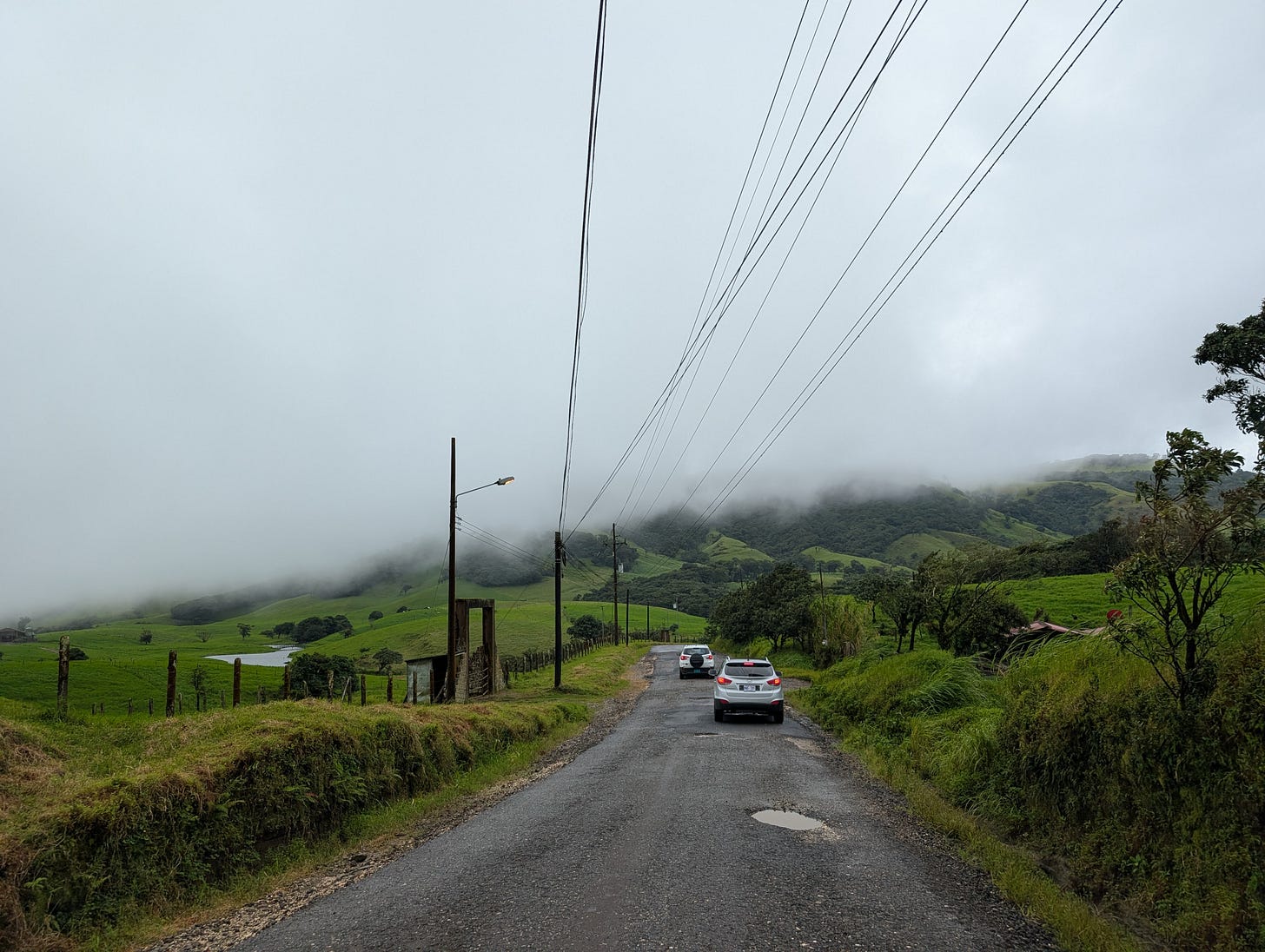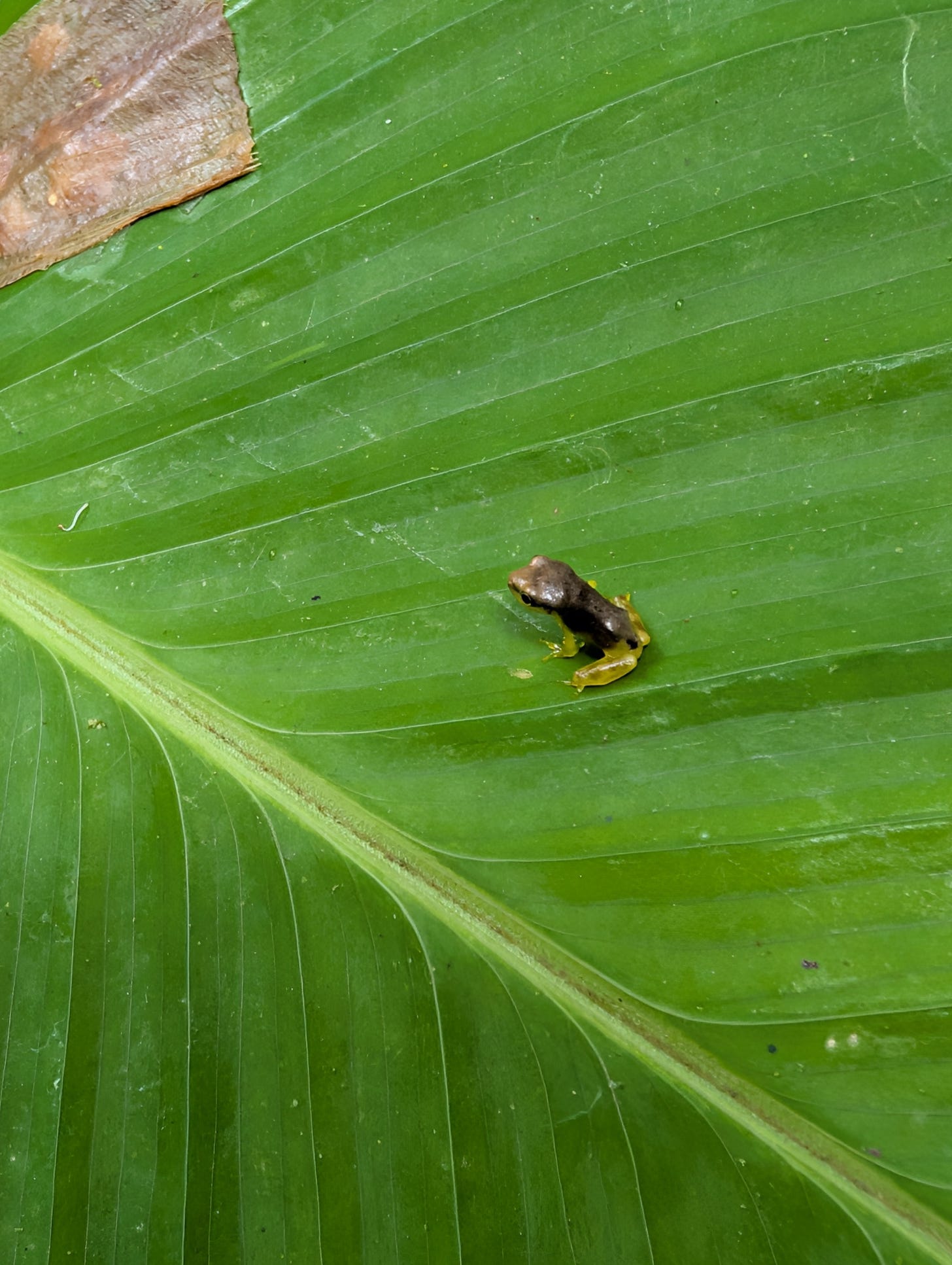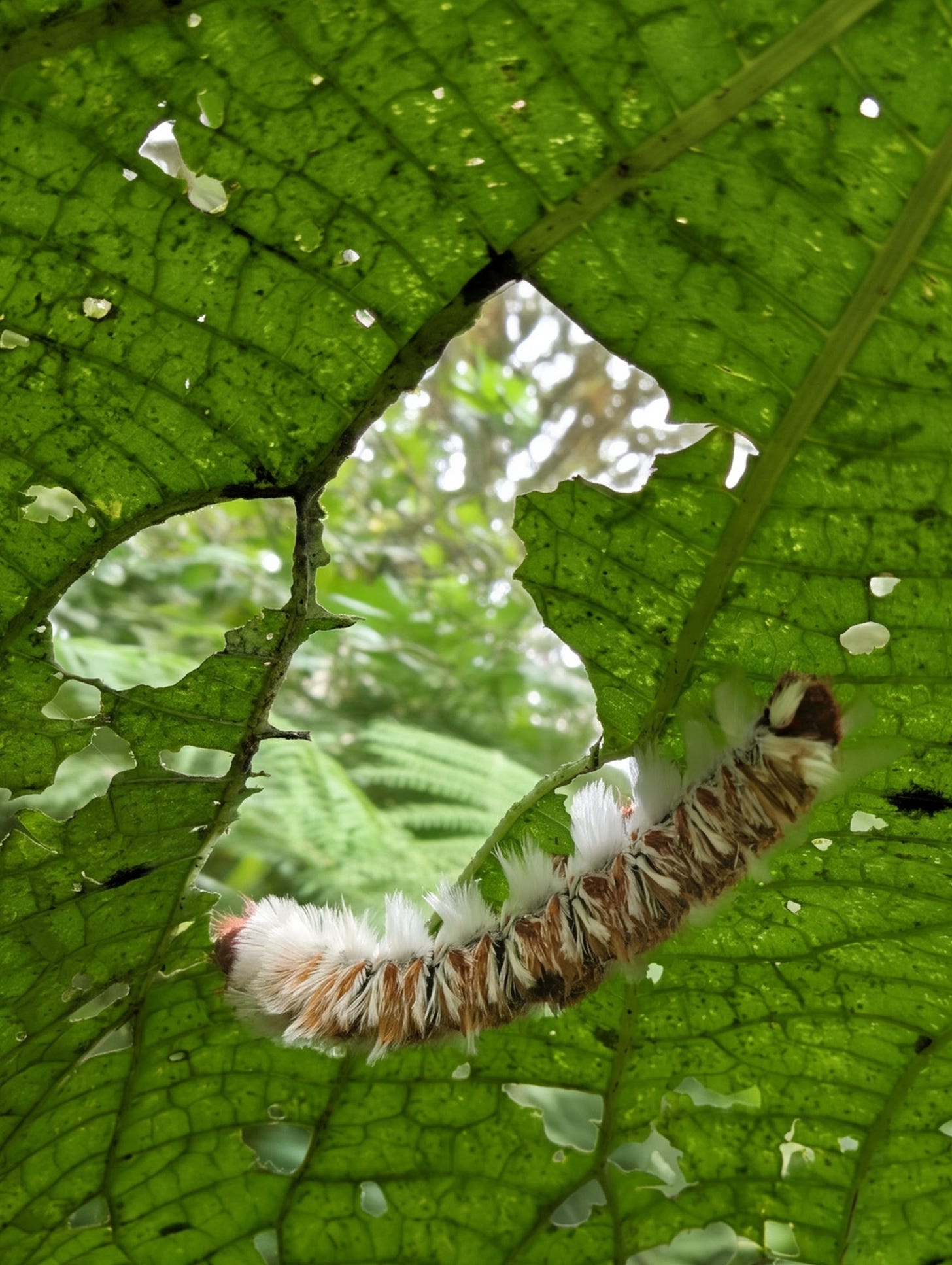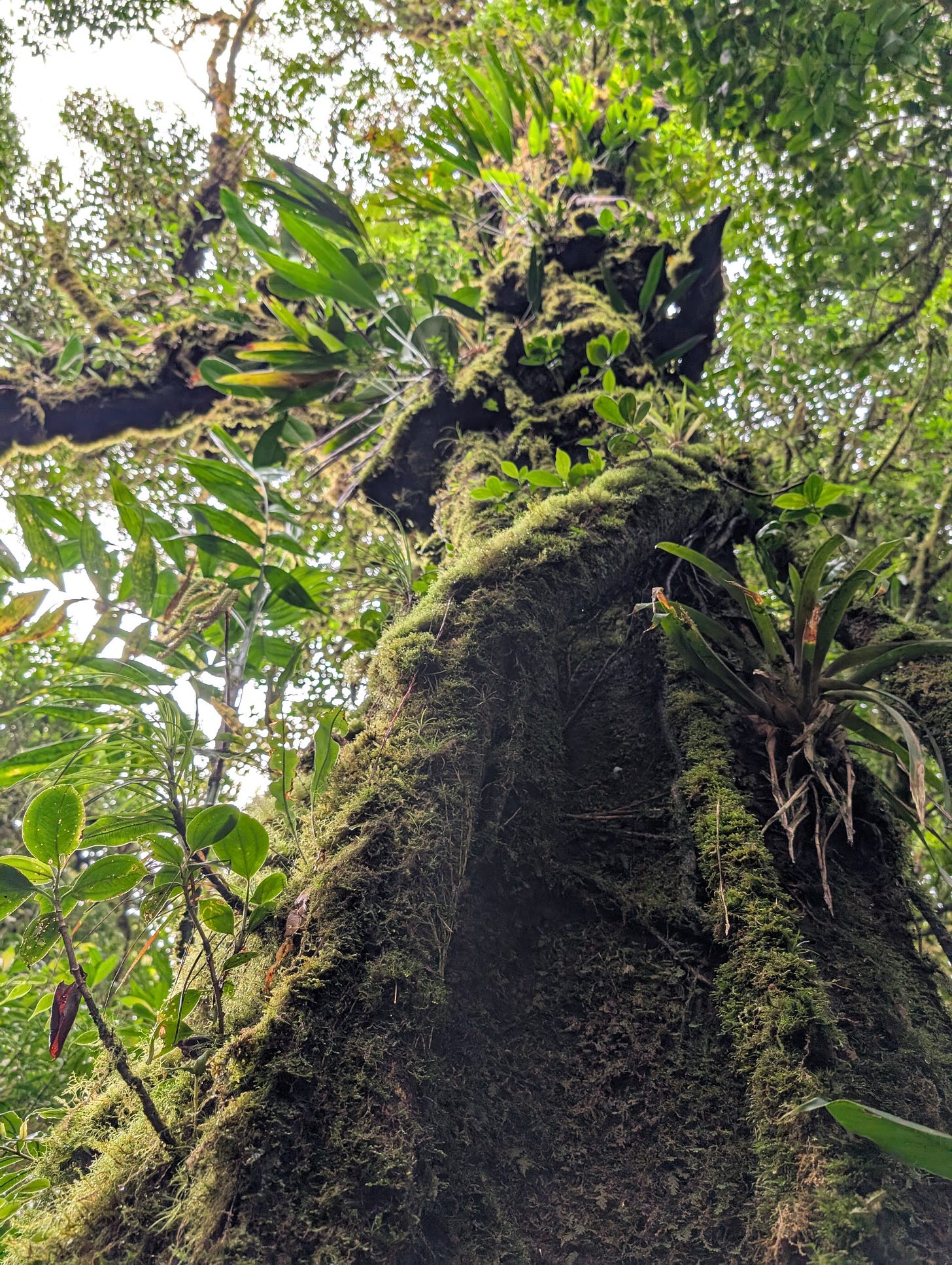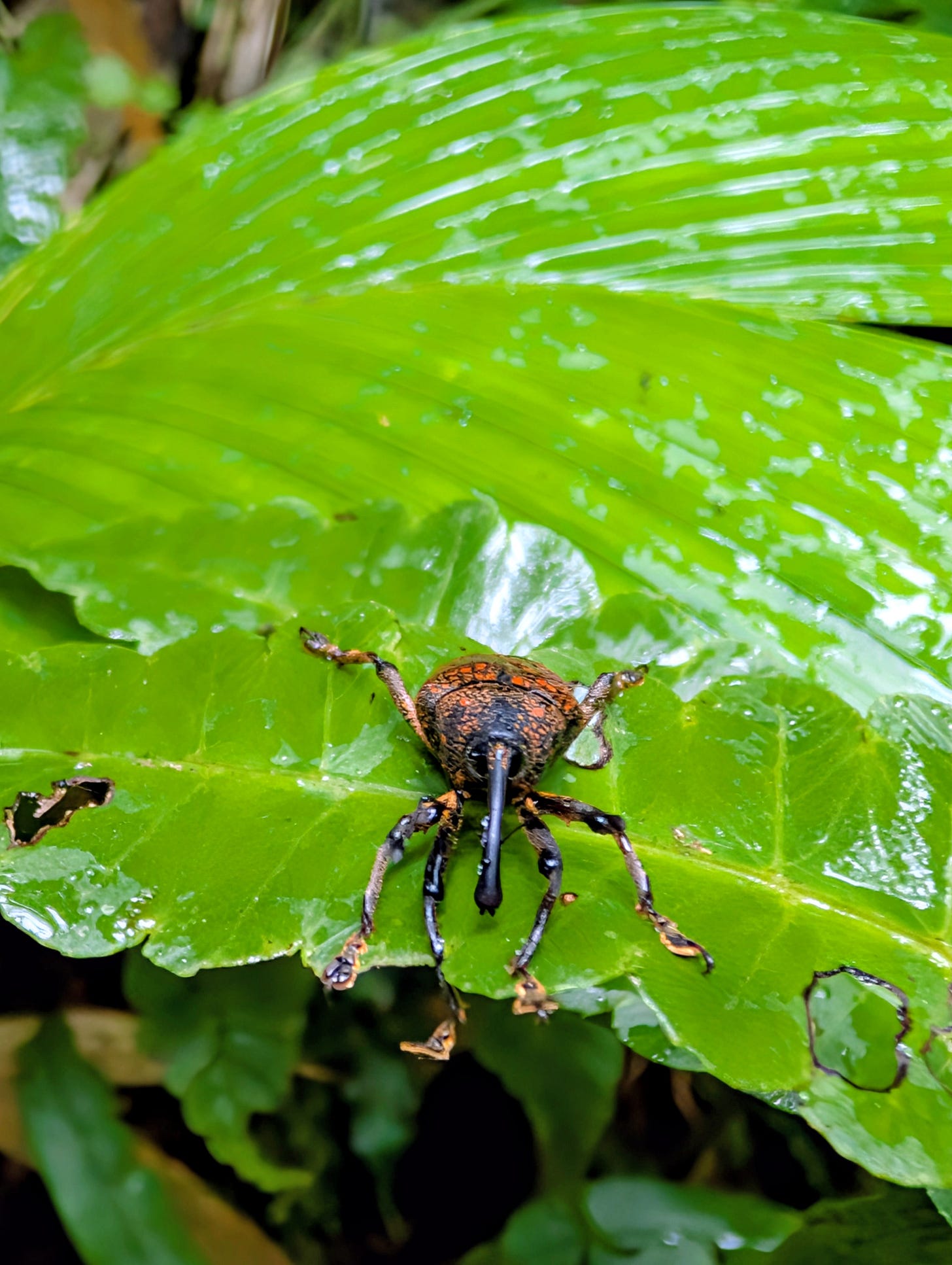Cloud Forest Magic in Monteverde
This place is true magic.
We got here yesterday after driving about 3.5 hours from La Fortuna, following paved roads that slowly degraded into semi-paved roads and eventually fully unpaved roads with potholes that we dodged like landmines as we got closer and closer to the cloud forests of Monteverde. Everyone warned us about the roads in these parts, but honestly I’d take them any day over the roads of San Jose where I believe we were honked at three times within 15 minutes of leaving the airport, and a motorcyclist smacked my review mirror.
The views got more and more expansive as well, and I see why some call Costa Rica the “Switzerland of Latin America.” I pulled over a couple of times to take a snapshot, but the results were rather pathetic compared to what my eyes saw so I won’t be sharing any of that.
Here’s a glimpse of the ride:
Monteverde’s Roots
The area was actually settled by a group of just 50 Quakers from the U.S. who were fleeing the draft for the Korean War in 1951. The Costa Rican government granted them refuge in one of the least accessible places in the country to let them clear the land for their cows and crops to produce milk, butter, and cheese. This area sat atop the Tilaran Mountain Range at the continental divide — about 4,600 feet about sea level — where “moist winds from the Caribbean” flow in to create the “lush, rich cloud forests”. On the clearest days you can see both the Pacific Ocean to the west and Caribbean Sea to the east.
But being cloud forests, it’s usually quite cloudy.
Along with all that settling came lots of deforestation, which was quite the bummer considering the area’s incredible biodiversity, accounting for 2.5% of the planet’s biodiversity in an area that adds up to just ~0.03% of the planet’s land. Fortunately a biologist named George Powell convinced the Quakers to create a ~2,000 acre reserve in the 70s to protect all plants and animals. This is now called the Monteverde Cloud Forest Reserve and has since expanded to 26,000 acres.
Today there are three main reserves, which now also include the Santa Elena Reserve at 765 acres and the Curi-cancha reserve at ~200 acres. There is also the Children’s Eternal Rainforest covering 56,000 acres, which is the result of a group of passionate Swedish children who campaigned to buy a bunch of land to help save the rainforest through a global fundraiser that seems to have worked out pretty well for them.
Anyways, I meant to simply write about how magical of a hike I took today, but suddenly landed tangled up in layers of history.
Why does everything on this planet need to be so interconnected?
Let’s get to it.
Trillions of Heartbeats
This is the least popular of the three reserves and we probably encountered no more than a dozen other people the entire time we were there.
It’s also probably the slowest I’ve ever walked a trail. Just within the first minute I saw what looked like a weird shaped raindrop on a leaf that turned out to be the tiniest frog I’ve ever seen upon a closer look. As I was taking pics, a couple came from the other direction and did what everyone does when there’s someone stopped alongside a trail taking pictures and got out their camera to do the same.
They had just finished the longest trail, which is almost 5 kilometers and said they saw some birds and monkeys but not much else for wildlife. So the frog seemed like quite the treat.
But after observing that tiny frog for a few minutes, my vision shifted to focusing on the tiny world of microfauna and I could barely take a few steps without finding another cool animal — mostly insects — that made what was supposed to be a “1.5-hour walk” start to look like a full-day excursion after an hour had passed and we had barely gotten a fourth of the way into it.
The vibe was magical. There was a surreal juxtaposition between cool air hitting the skin and tropical rainforest hitting the eyes that I usually don’t picture together. A gentle thunder rumbled throughout most of the hike as the weather seemed to shift by the minute from slightly sunny to slightly cloudy to completely cloudy with spurts of mist and heavy rain, and then back to sun again.
The foliage was so dense that there were parts where you’d hear the rain falling but not feel a single drop hit the ground as the towering trees served as giant umbrellas.
Each tree seemed to have an entire planet of microhabitats layered with all kinds of plants growing on the trunks themselves and vines tangling between them with drooping mosses.
Aside from insects, we didn’t actually see much for wildlife.
But I kept hearing bird sounds I’d never heard before and would pull out the Merlin app to see what it could ID from the sounds. I heard many more than I ended up actually seeing. But their presence was clear at every step.
We also didn’t end up seeing any mammals, but at the reception lobby had seen cam recordings of pumas, wild peccaries (i.e. a kind of pig), coatis, and others. So I knew they were around us too.
Up a few feet ahead of us at one point a large flying insect crossed the path that I swear looked like a fairy (it was probably a moth of some sort) and I wondered if old tales of fairies were actually referring to something like that. Whatever it was, it looked like magic, and might as well have been a fairy. What’s in a word anyways?
We have all kinds of words for the natural world and the life it contains, but they just don’t seem to capture the magic of the trillions of heartbeats that make up a cloud forest like this one. The place is full of magic, whether you see it or not. That’s the Santa Elena Cloud Forest.
With love from Planet Earth,
Doug


